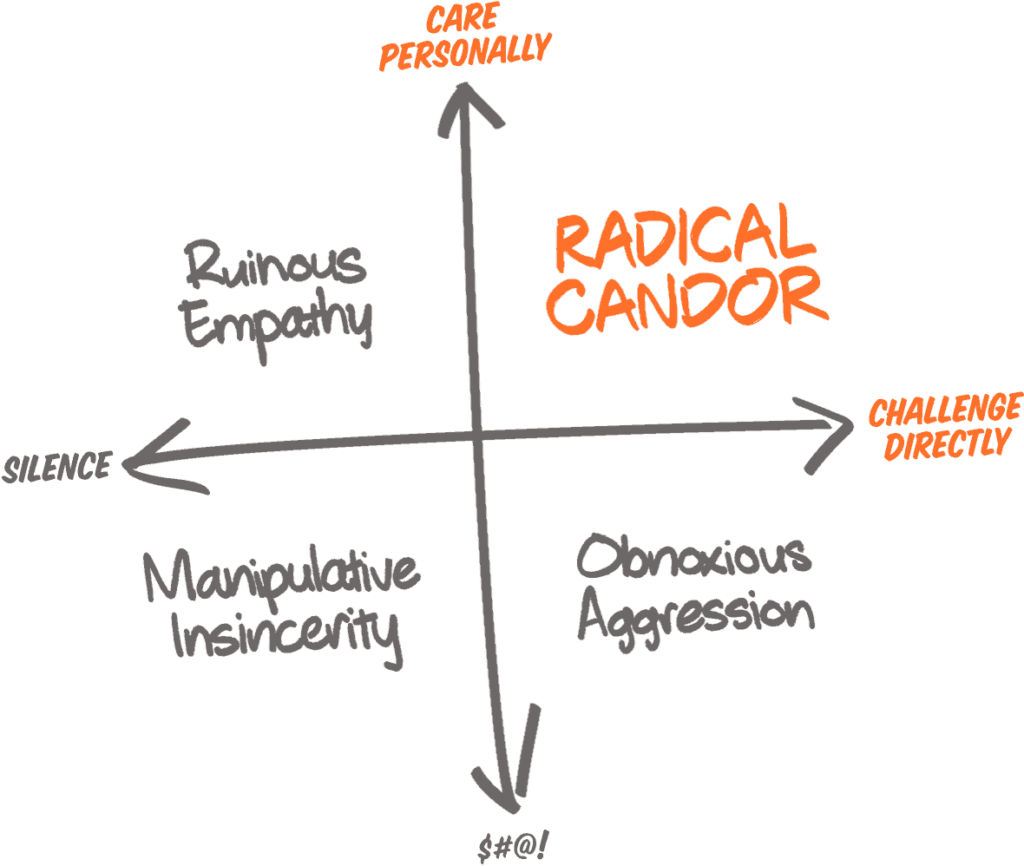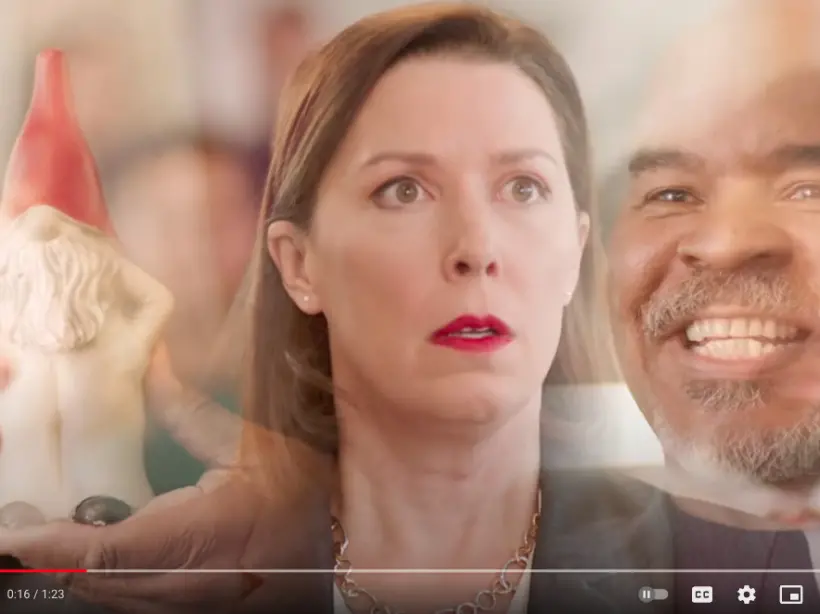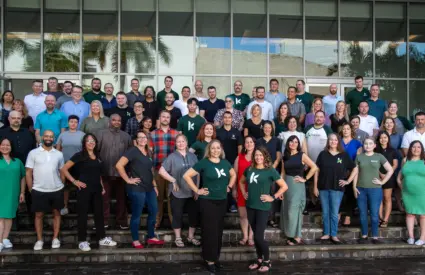We’ve all been there — a colleague misses an important deadline, says something inappropriate during a meeting, or makes a mistake on a project that creates havoc within your organization, and you are in charge of talking to them about it. You want to give honest feedback, but more often than not you are like so many of us — you zig into kindness or zag into clarity, but can’t get a foothold either way. Perhaps you feel it’s easier to approach the other person and blurt out your unfiltered “honest feedback” without any kindness or clarity in your approach. So, then what? The original problem is never truly resolved, the other person feels blindsided or confused, the issue continues, and resentment builds with you, your team, and the person themselves. Rinse. Repeat.
In walks the conundrum. Hard conversations are hard, and most of us are never taught how to communicate in ways that make hard conversations easier or more productive. The problem starts early on with the familiar adage, “If you don’t have something nice to say, don’t say anything at all.” When we are early in our careers, egos are fragile, and our working personalities are starting to calcify. In our working lives, and with the “if you can’t say something nice…” foundation in mind, we are told to “be professional” without any guidance as to what that actually means. As a result, many of us become accustomed to shutting down, avoiding interpersonal issues directly, or trying to navigate difficult situations without any tools to do so.
This was a challenge we found ourselves facing at Kanopi. Enter: Radical Candor.
Radical Candor is a communication philosophy created by Author, former Apple University faculty, and former “Googler” Kim Scott. Its approach seeks to teach folks how to “Challenge Directly” (giving feedback without fear of pissing the recipient off) while also “Caring Personally” (developing relationships by also giving consideration to the person you’re saying it to). Simply put: Practicing Radical Candor is meant to help those who use it build some of the best, most honest relationships of their careers.

The matrix Scott outlines to help guide Radical Candor is in the form of a 2×2 framework – the x-axis runs through the middle of the matrix and ranges from “silence” to “challenge directly.” the y-axis ranges from “$#@!” to “care personally.” The 2×2 Matrix is also an extremely helpful tool when there is an abundance of qualitative information that will guide potential solutions.
To quickly understand the four types of feedback this matrix illustrates, here’s a little tl;dr:
Ruinous Empathy (when one is kind but not clear)
- We are so concerned about not hurting people’s feelings that we avoid giving feedback that may help get the outcome we need.
Manipulative Insincerity (when one is neither kind nor clear)
- We often talk about someone, but not to them. When we do talk to them, we are passive-aggressive to try and manipulate a specific outcome.
Obnoxious Aggression (when one is clear, but not kind)
- We may fight for our point of view or double down without being willing to listen or even allow for differing points of view.
Radical Candor (when one is both kind AND clear)
- We challenge directly and fearlessly while caring personally.
Ultimately, Radical Candor seeks to change the way we speak and interact with those around us by conditioning us to carefully consider our words and actions. As such, the first and most important step to practicing Radical Candor is soliciting feedback from your colleagues. This way, you know what they need from you, and you can shape your approach as a result. Also, to use the frank language of the Radical Candor training, you learn how to “take it” in terms of feedback so that you can “dish it out” in a clear, kind way down the road. From there, you can operate from a place of thoughtful collaboration without skipping the hard stuff.
In 2022, Kanopi started adopting Radical Candor by taking the hilarious multi-part Radical Candor “Feedback Loop” training. From there, we turned that training into a required step for onboarding all new employees. We learned a framework for difficult conversations: identifying the issue, pulling the person off to the side (as most people do not react well to being called out in public), and fearlessly communicating and interacting with one another in a clear and kind way. The training also digs into the ways people receive Radical Candor; no two people are alike, so the training helps to show us how to lean into caring, as appropriate, and understanding that clear feedback may be hard for the other person to receive. The training also provides communication techniques and ways to approach hard conversations, such as naming the things we are feeling, or using curiosity to understand how the other person is feeling.
Here are some tips and tricks to operationalize Radical Candor within your team and organization:
- Gauge each situation individually
- People are different! Feedback is not a “one size fits all” prospect
- Check your bias!
- Remember that non-white and non-male folks are often penalized for having strong emotions.
- Check in with yourself to ensure you are not reacting because of your own unconscious biases.
- Acknowledge emotions as they come up
- We can’t “care personally” if we don’t allow ourselves to be real humans.
- It is never helpful to ignore or dismiss emotional reactions — rather, lean into curiosity.
- Meet emotions from the other person with compassion
- An open display of emotions doesn’t mean the person isn’t willing to hear you. Emotions can be indicators that the feedback is hard to hear.
- Get curious by taking a moment to acknowledge emotions with simple questions.
- “Can you help me understand how you’re feeling / what’s happening right now?”
- Encourage Radical Candor
- If you hear someone having an issue with another person, encourage them to meet privately and have a direct conversation by approaching with a mix of Caring Personally and Challenging Directly.
Ultimately, Radical Candor aims to empower employees to give each other real-time, honest, kind feedback on any topic or with any level of potential discomfort. Moreover, employees and teams will be more inclined to invest in their work when done regularly and well.
Radical Candor immediately helped Kanopi lean further into our values by creating #Clarity and developing #Trust within our teams. Plus, we gained a fun new hashtag from our training: #RadyCandy! We encourage anyone who adopts this communication philosophy and engages in radically candid conversations to give others grace when utilizing this process (after all, this is a new skill for some and a refined process for others). We’ve found that folks in our agency are open to having difficult conversations – initiating and participating in them. The process can still feel challenging (after all, hard conversations are STILL hard), but this course taught us to identify the conversation styles outlined on the Radical Candor matrix. As a result, we can all help guide and model what it means to challenge directly while caring personally.








